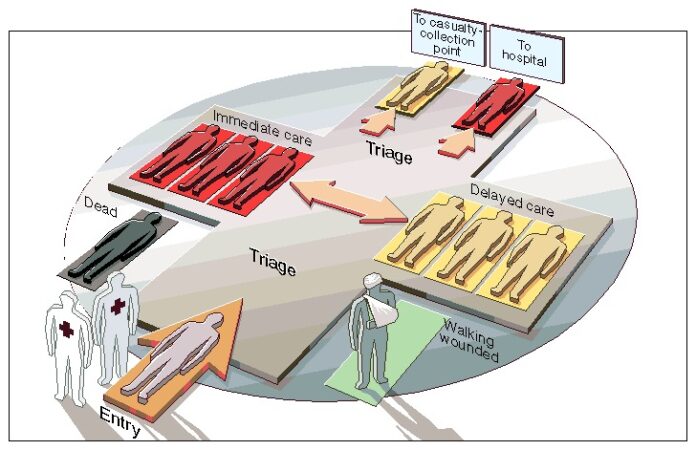Article Excerpt
“studying the 1980 earthquake in southern Italy, concluded that 25 to 50 percent of those who were injured and died slowly could have been saved if first aid had been rendered immediately.”
“The operations plan of the medical disaster-response model organizes surviving health care providers into teams capable of delivering medical care immediately after a catastrophic earthquake. The goal of these teams is to stabilize the condition of victims in the field and then facilitate their transport to intact local hospitals or predesignated evacuation sites. The plan is divided into three phases according to the time elapsed since the initial earthquake and the location of treatment: hour 0 to 1, solo-treatment areas; hours 1 to 12, disaster-medical-aid centers; and hours 12 to 72, casualty-collection points.”
Analysis
It seems that a proper triage strategy is as important as the medical care itself. Aliquoting patients to the correct locations, and setting up those correct locations, stops certain areas from getting overly congested and thus increasing the mortality rate in cases where time is of the essence. The fact that the mortality rate can be decreased by such a factor simply by reorganizing medical care in an emergency (not sending further supplies or resources, just reorganizing) is both heartbreaking, and a relief. I think not relying on hospitals themselves as the immediate point of care, but instead providing medical professionals in communities with emergency backpacks after training (similar to how CPR training is given to individuals), is a brilliant step into putting the power into normal civilians hands. There’s only so many hospitals that can be set up, but if you equip the average individual with the resources to succeed, surely the community will be better prepared for anything.
Disasters know no borders and can simultaneously hit one or several countries without warning. Having a well-coordinated joint response means that when national authorities are overwhelmed, they have one point of contact rather than multiple to deal with
A joint approach further helps pool expertise and capacities of first responders, avoids duplication of relief efforts, and ensures that assistance meets the needs of those affected.
Pooling together civil protection capacities and capabilities allows for a stronger and more coherent collective response.




